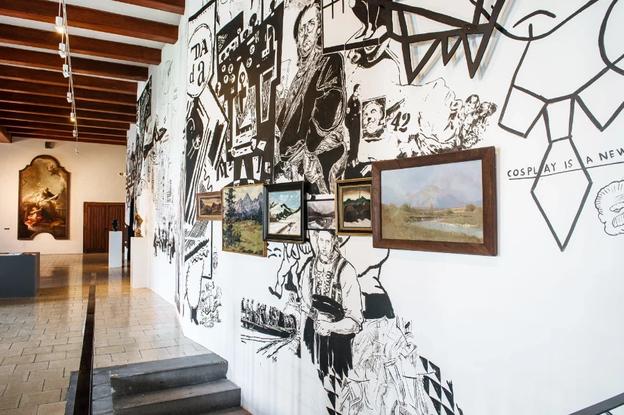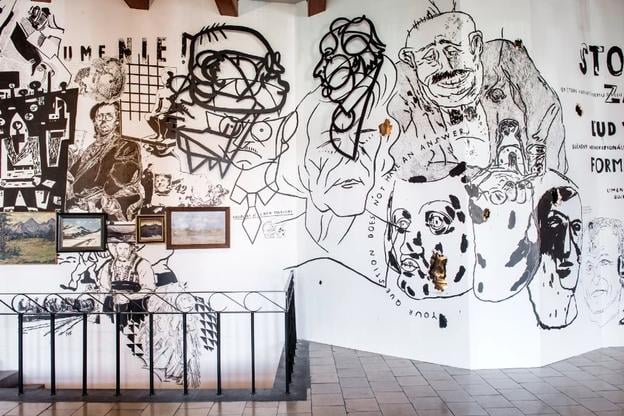Behind the historic walls of Zvolen Castle in central Slovakia, a cultural wound has been opened. A monumental 250-square-metre mural by renowned Czech artists Jiří Franta and David Böhm, once a centrepiece of the Slovak National Gallery’s outpost here, has been destroyed – without warning, consultation or preservation, according to Denník N.
“There are exhibitions one never forgets, and this wall was the heart of such an exhibition,” said Erika Trnková, the castle’s former director, who resigned in March after more than a decade at the helm. She called the new management’s decision to dismantle the work “shocking”.
Installed in 2019 as part of the acclaimed exhibition To See, to See and to See!, the mural had transformed a vaulted gallery space into a visual echo chamber of Slovak art history. The artists painted directly onto plasterboard panels, drawing inspiration from local landscapes, archival materials and even fragments of earlier exhibitions.
But earlier this month, photos and videos posted by the exhibition’s curator, Eva Kotláriková, showed the mural in pieces – unceremoniously torn down and thrown into a skip. No fragment was saved. Neither she nor the artists were informed.
“I was never contacted,” Kotláriková wrote online. “No curator, no restorer, no artist was consulted. This was not removal – it was destruction.”
According to Kotláriková, maintenance staff carried out the work under orders from the castle’s new director, Peter Gnida, a little-known figure in the Slovak arts scene whose previous role was in regional health insurance. He replaced Trnková following a wave of protest resignations within the national gallery system, triggered by concerns over political interference. In the municipal elections, he ran as a Slovak National Party candidate for mayor of Sielnica, a village in the Zvolen district. He currently serves as a local councillor in Sielnica, his hometown.
Asked for comment, Gnida referred journalists to the Slovak National Gallery’s headquarters in Bratislava. In a brief statement, the SNG claimed the mural could not be preserved due to material degradation. The plasterboard, it said, had weakened, making safe removal impossible.
The artists remain unconvinced. “This was a deeply personal work,” Böhm said. Franta called the act “normalisation behaviour” — a chilling reference to the cultural purges of Czechoslovakia’s communist past.
While official social media posts from the castle tout courses for retirees and a ’90s dance party under the stars, the gallery’s website offers no mention of the mural’s fate. No formal closure event, no farewell, no trace in the summer’s exhibition calendar.
“It was a temporary exhibition, yes,” said Trnková. “But even temporary things deserve dignity.”
In the end, the mural’s destruction may symbolise more than the loss of a single artwork. To some, it reflects a broader erosion of trust between artists and the institutions meant to protect them. And in a castle built to withstand sieges, it was silence – not cannon fire – that claimed the wall.






